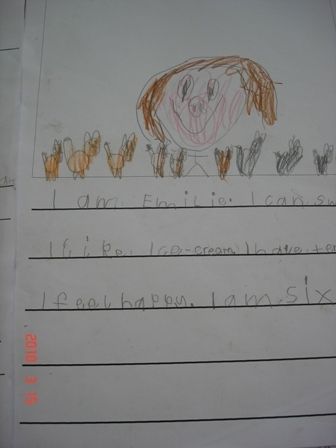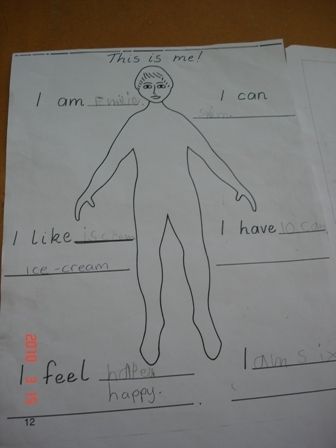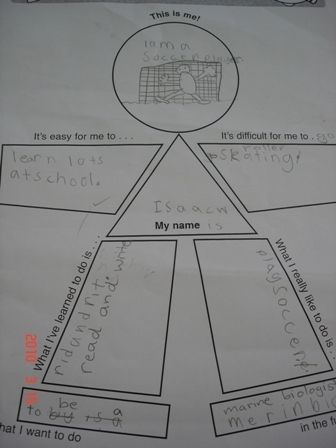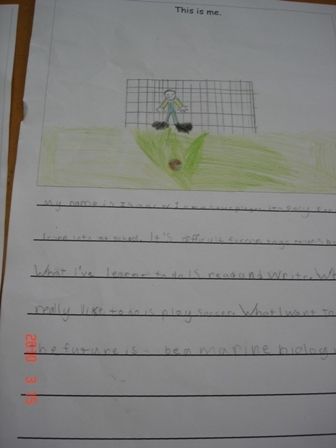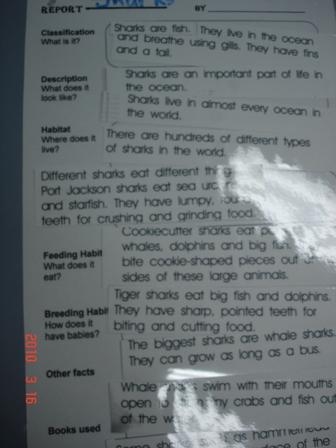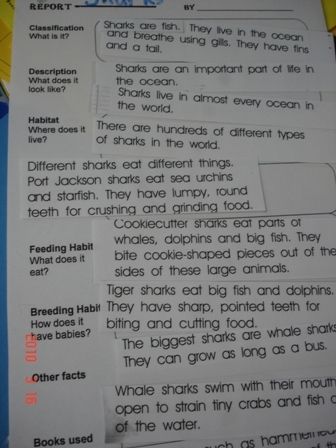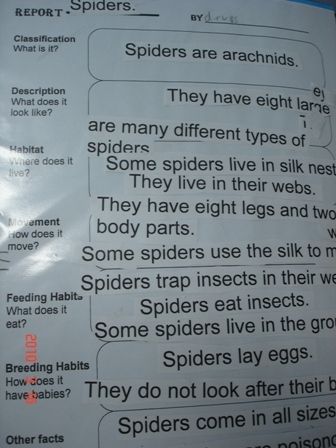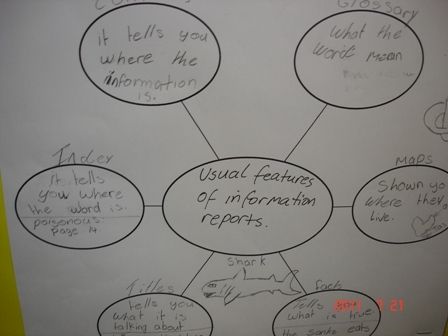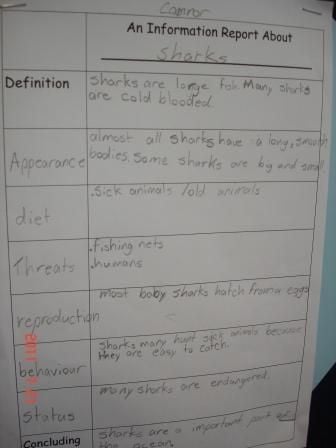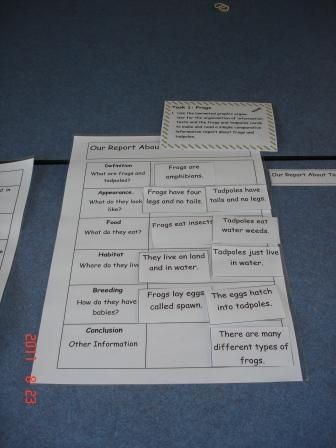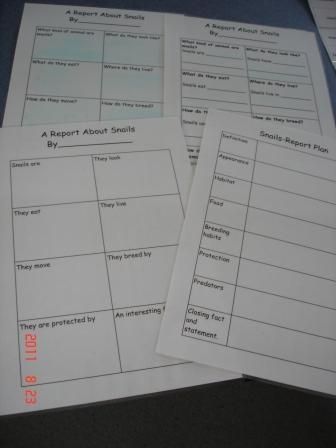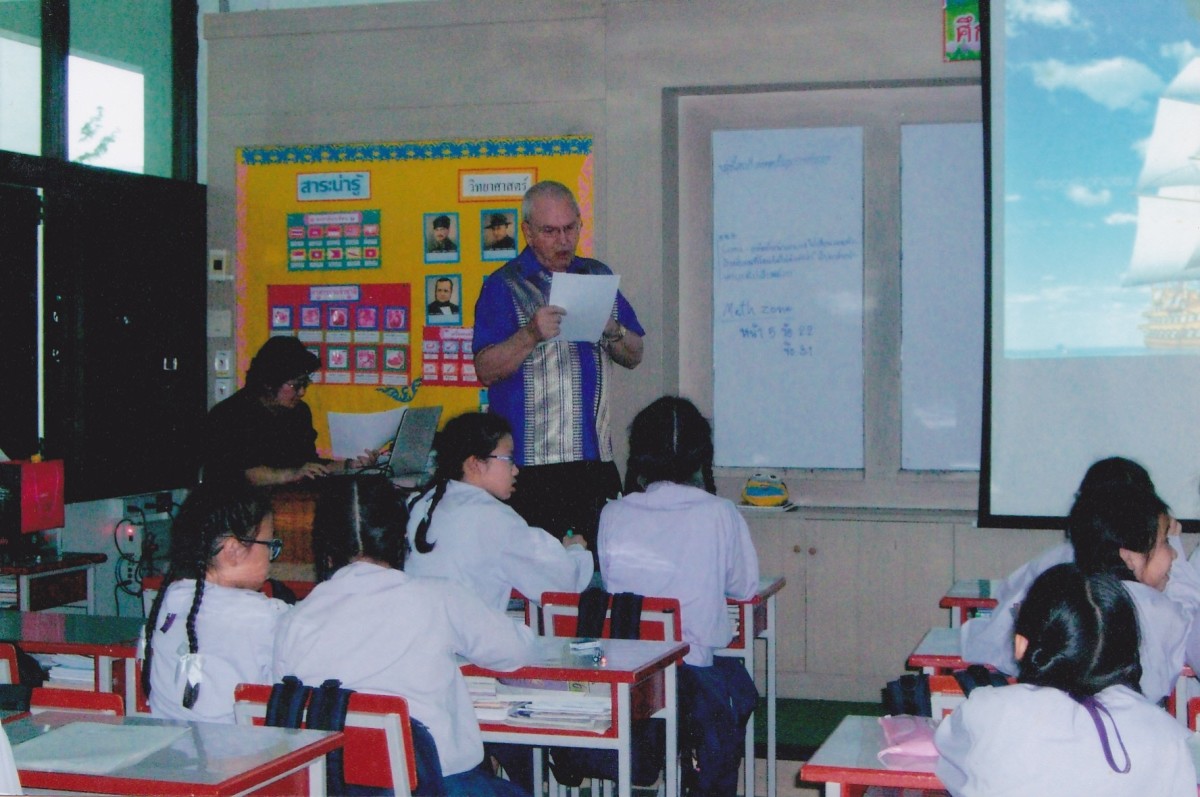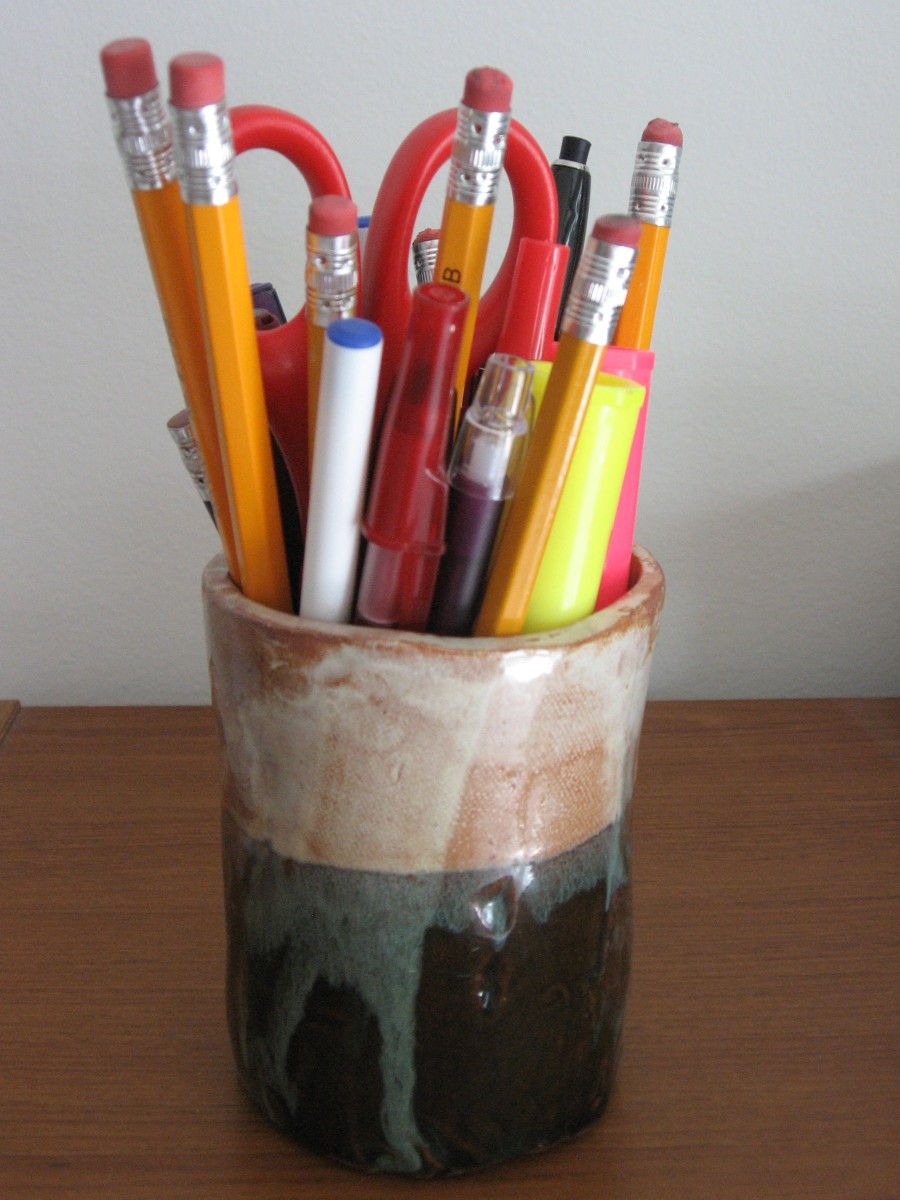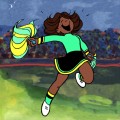Supportive Classroom Environments
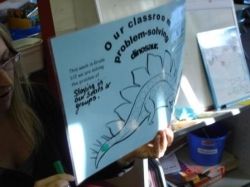
Scaffolding Students to Achieve Success
Welcome to my lens which is all about scaffolding students in the classroom to achieve success at their own level in literacy, numeracy and social skills. When you build a supportive and differentiated classroom environment, your students are happier and deeper learning can take place!
In this lens you can find information on how to scaffold your students with graphic organisers, support first year students to start school and how to teach your students to work more independently through the use of task management boards, word walls and work expectations charts.
I love feedback. Please drop me a note on the tips you have found interesting or helpful.
Victoria cochrane
What is Victoria Cochrane About?
The philosophies and beliefs underlying my practice.
All children can learn and have the right to a quality education.
Teachers must have high expectations of all children, even those with special needs or who are experiencing learning difficulties.
High expectations must be accompanied by focused, explicit teaching.
Teachers must constantly assess for and be aware of each child's learning needs.
Start with what the child knows to teach them something unknown.
Start with where the child is at-starting anywhere else is a waste of time.
All children go through the same stages and phases but they get there in different ways and at different times.
Literacy is a social practice and all learning is a social construction.
Children learn through experiences and by linking them to their own experiences.
Children are a product of their environment. A child's early language experiences set them up for future literacies.
Expert readers and writers always have a purpose when they read and write. Children must be taught that we write in different ways for a purpose and an audience.
Reading and writing are inexplicably linked. It is up to us to make the connections explicit to children.
Good reading and writing practices must be modelled and re-modelled, practiced and practiced and practiced.
Children should read and write every day.
Do you know the philosophies and beliefs underlying your teaching practice?
Research indicates that the more aware educators are of the pedagogies driving their practices, the stronger and more focused their teaching will be (Anstey & Bull, 2003).
Why not have a go at writing down your beliefs about teaching and learning. You may be surprised!
Link List
- Quality Thinking and Learning at Kurwongbah
This site is a fabulous resource for Thinking tools and templates, such as Graphic Organisers, Gardiner's Multiple Intelligences, De Bono's Thinking Hats and Tony Ryan's Thinking Keys. - Top Level Structure: Why Use Graphic Organisers?
This is an article I wrote that was printed in the Octover 2010 issue of Practically Primary (ALEA). - ABC Teach: Graphic Organisers
This site has printouts of a variety of graphic organisers for modelliing, teaching and student use. - Writing Fun by Jenny Eather
This website is a fabulous tool for teachers who want to teach text types in their classrooms. The examples aid in teaching students all the structures and features of different text types, and are written in varying levels of difficulty. - Primary Teaching Resources.
Free teaching resources in all areas of the curriculum.
Graphic Organisers at Work! - These are samples of how I use graphic organisers in the classroom to scaffold writing.
Click thumbnail to view full-size



When are graphic organisers appropriate to scaffold emergent and early writers?
A letter from a teacher asking for support and advice.
Hi Vicky!
Congratulations on your distinction- that's fantastic! We all miss you here too, especially your timely advice on every subject under the sun. I have a quick question about graphic organisers. I have gone down to a grade 2 this year and am finding the change quite a shock! A lot of my standard routines are going out the window. Since you came in my first year I have used graphic organisers for all our writing, but this week I have found it a bit harder to get these littlies to use them. They tend to spend all their time filling out the graphic organiser and then little time writing. Should I persevere and keep teaching them how to fill them in and refer to them in their writing, or is it better to just 'talk out' their plans and then get stuck into writing?
Hope everything is well with you!
Love Rachael.
Dear Rach,
So great to hear from you. Look, it depends on whether you want them to learn how to plan or to just write. My advice would be to model planning using the GO's as a whole or small focus group and then write from that. At this early stage, don't expect them to do both, but work towards it. After guided reading you can use them to organize their thinking etc, and just display their work. Another way is to share write two thirds and get them to finish off. The more capable kids will become independent with the technique fairly quickly, other kids may need the scaffolding of modeled/shared planning all year. The hardest thing is not to expect too much of them. If you think of them as grade ones until Easter, that might help. If you have some who are still needing quarter book (Jo is an expert on that) planning writing is a no go zone.
I hope that helps you a bit.
Please don't hesitate to email me, but J. and A. are great resources too!
Blessings and love.
You can do this!
Vicky xxx
Familiarisation of Information Report - Sorting text into categories.
Click thumbnail to view full-size







Teaching with Graphic Organisers

Small Group Work in the Classroom
Building an Environment to Support Explicit Teaching
Yes, it can be done! It just takes organisation, student training and consistent, clear teacher expectations. Here are some suggestions to help you to get started:
Train your students:
Set your expectations, type them up and put them in a prominent place. E.G.
1. Stay at your activity.
2. Leave the teacher alone if she is working with a group.
3. If you need help, try to solve it yourself or ask a friend.
4. Work quietly.
5. Tidy your work area.
6. No toilet breaks allowed during on-task time.
Go over class agreements every day before starting work. Expect that they can and will do it. See the article, "Creating On-Task Expectations" below for an example of such a chart.
In the first two weeks, if necessary, work in groups without a teaching group so you can supervise while students adjust.
When teaching children to work in this way, begin with smaller time allowances according to their ages, e.g. 10 minutes leading up to 20. It is a good idea not to keep students working on the same task for too long-plan for them to finish it off the next day or schedule a double session-40 minutes maximum.
After each session, ask students to reflect on their behaviour and work habits and how they can improve on them. Celebrate students who completed tasks successfully according to the agreements.
Use task boards and daily schedules to make tasks and timetables visual: students will learn to be more independent in their movement between tasks when they know what is happening next.
Ensure independent tasks are appropriate to student ability and achievable. They should be consolidation, practice or finishing off tasks only.
Teach students organisational skills and make sure they have all necessary equipment before they begin.
Allow time for toilet breaks between whole group and small group times. Students will learn to go at the appropriate time.
Keeping it going:
Actively teach students independent working and problem solving skills through use of class charts, (e.g. list all the things students can do to solve task-related problems; make a y chart and brainstorm what a quiet classroom looks, sounds and feels like), collaborative construction of class agreements and achievement awards.
Use reward/ modification or celebratory systems to provide motivation and encourage independent, supportive and on-task behaviour.
Ensure students know what to do or are provided with work to go on with if they finish early. Some teachers use learning centres and cross-curricular activities as back-ups to their main literacy programs.
Actively build warmth, rapport and mutual respect between you and your students.
Build classroom climate of mutual respect, acceptance of differences and support for each other.
Teach social skills in every aspect of the day.
Encourage students to take responsibility for activities such as painting: if they need to use paints, expect them to set it up and clean it up afterwards. Encouraging students to have ownership of the classroom and their own learning increases student motivation and engagement in learning processes.
Creating On-Task Expectations - Teaching Children to Work in Groups
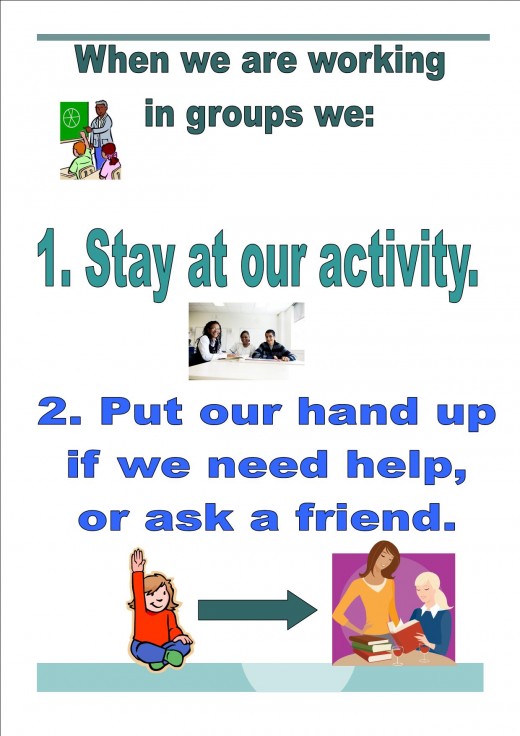
Go over the expectations for working every day. - Teach your children to let you work with groups uninterrupted.
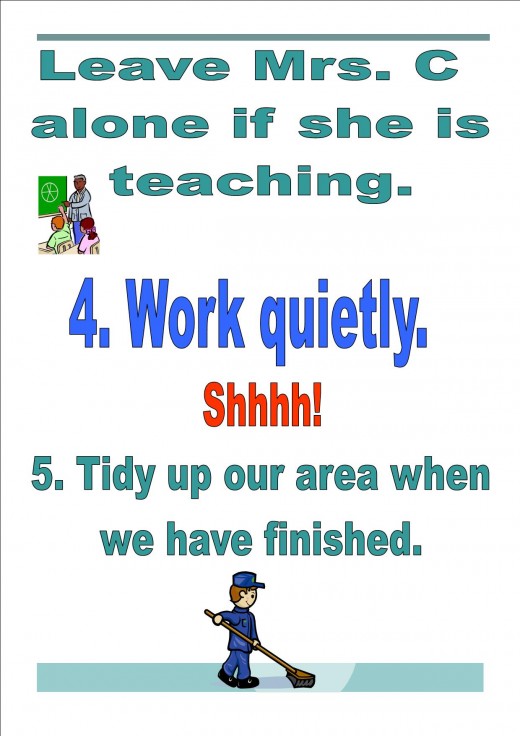
Supporting Young Students at the Beginning the Year .
Some ideas for the beginning of the year in Prep (Aus); Kindergarten (USA):
Settle them in first and build relationships with all of your students! Make sure they are happy to be there!
Develop toileting and eating routines, as well as expectations for behaviour.
Give them toilet, fruit and drink breaks.
Build inclusion. Do lots of get to know you games and group activities to help the class gel together.
Set simple tasks whole class at first.
Use the visual task board and timetables straight away.
Use this time to assess students reading, writing, speaking, listening and social abilities. Do some assessments and take observations. Assessments: Letter I.D., running record; writing sample; can they write their name, hold a paintbrush and pencil, use scissors?!!
After two weeks, put the children into random groups. Give them simple jobs lasting 10-20 minutes. Roam and do not take teaching groups.
Teach them how to reflect on their work in a community circle.
When you are happy with their progress, group into ability and plan as you have been doing. Perhaps just try one reading and one writing activity to start with.
Give them plenty of hands on and make and do activities.
Give them responsibility- collect materials and pack away, look after own things etc.
Be positive, positive, positive!
Celebrate the smallest successes and have fun.
Visual timetables

Jo scaffolded her Prep (Kindergarten) students with a visual timetable. Young children like structure, and students with poor memory or autism benefit from visual aids.
Visual Taskboards in Pre-School - Creating independent and flexible learning environments
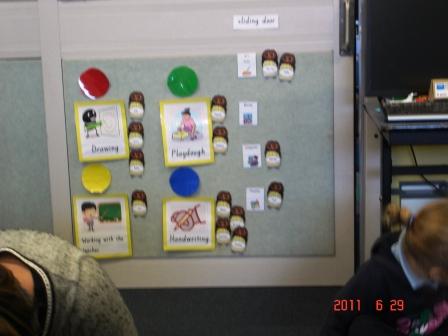
The kinder teacher, Marita, introduced this jobs task board as a way of promoting reading and independence in her kinders (pre-schoolers). The children were free to choose which jobs they wanted to do, but grouping them for the first job ensured a lack of crowding at each activity, and allowed the teacher to target children she wished to work with each day. The students were using the board successfully on the first day of introduction. The colours relate to the colours of the tables in the room.
Support Your Students With Visuals
Visual supports in early childhood classrooms are a must, but students in middle to upper primary may need visual reminders to nsupport their learning. Most classrooms rely on students to use verbal and aural processing, but many students need visuals to help them remember and process information.
Word Walls- Lexical Links - Scaffolding children in writing through interactive word walls
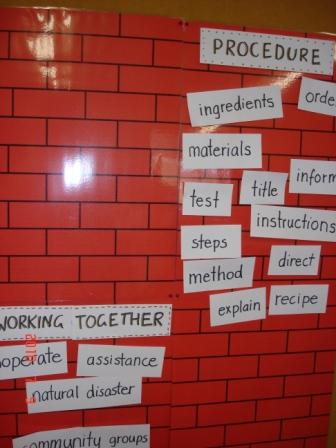
Word Walls are an important scaffolding tool in any early childhood/middle primary classroom. They promote reading skills and independence in writing for students while encouraging them to use a wider vocabulary in their writing. Word walls can be made up of sight words, everyday words or thematic words. To be most effective, they must be alphebetised, at student height, referred to every day by the teacher and changed regularly. I find it useful to blu-tack each word to the wall for easy access by students. When writing, students could also have their personal spelling dictionary or writing journal with them, and be encouraged to write in words from the word wall that they are using often.
Useful sites about word walls are:
http://olc.spsd.sk.ca/de/pd/instr/strats/wordwall/
http://www.theschoolbell.com/Links/word_walls/word...
http://www.scholastic.com/teachers/article/word-wa...
Mobile Word Walls - For Literacy Support Teachers
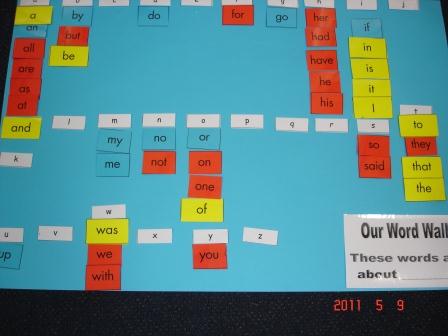
Alphebetise the word wall for easy access to words. Provide common sight words and unit or topic words. A picture on the cards informs the children about which topic the words pertain to. Blue tack on the back allows the students to take the words back to their desks to use when writing.
Teaching for Strategies - Reading Strategy Wheel
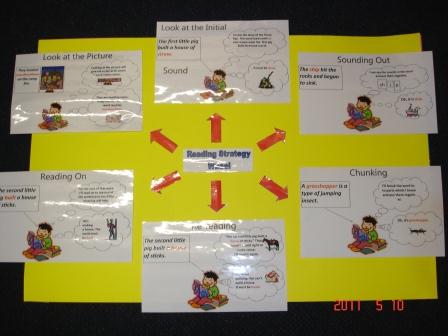
Good readers use a range of strategies to decode texts. Developing readers need to be taught and reminded to use different strategies as they problem solve print.
Having a strategies chart in the classroom is an excellent tool for the explicit teaching of reading strategies and to assist students to remember the strategies they have learnt when reading unknown text.
Thanks to Jo Hall from Devonport Christian School, Tasmania, for the strategy cards.
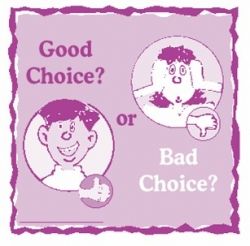
Actively Teach Social Skills
Social Skills Programs That Work!
Teaching social skills regularly in your classroom are an absolute must if you want to stay sane for the entire year! Using a social skills program will help you to structure a complete program that models positive social behaviour to students. My two favourites are Tribes (Gibbs, 2001) and Program Achieve (You Can Do It Education).
Consistency is the key to success. Set your expectations and stick with them. Use positives instead of negatives as musch as possible, and build relationships with all of your students. More importantly, make sure your students build relationships with you and each other. The building of inclusion is the key ingredient to successful supportive classroom environments.
The other is respect. Children respond much more positively to those for whom they feel a sense of respect and trust. Show them that you believe in them and that you are genuinely interested in their lives and their learning. By the same token, make your expectations for behaviour and work ethics clear, and actively teach the students how to live up to those expectations. Using visuals will help. Below are some ideas.
Social Stories
Children who find learning social skills difficult could benefit from the introduction of Social
Stories. Although time-consuming, social stories can be used to teach specific social skills to individuals and classes, and are
a fantastic supportive tool for parents to use at home.
Help me make this page even better!
What is the article on this page that you found most useful?
Books for building supportive classroom environments
The explicit teaching of social skills is a must for building a supportive classroom climate. Here are some books I recommend to help you and your school teach social skills in a holistic and positive way.

